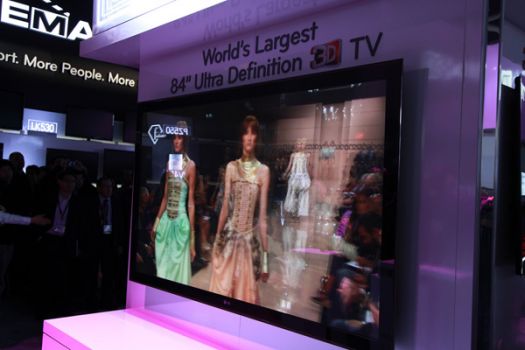That full HD 1080p HDTV may be your pride and joy and the pinnacle of your living room or home theater, but all that may change in a few short years. Hang onto your HDMI cables because the newly announced UHDTV format could make that set seem as old-school as the analog CRT.
UHDTV, also known as ultra high-definition TV, promises an increased screen resolution to around 33 million pixels (7690 by 4320). In case you're bad at math, that's about 16 times the resolution of current HDTV sets. It doesn't just mean in-your-face action flicks and dissecting the complexion of Hollywood starlets. (Of course, both are a nice bonus.) It's like having an IMAX theater right in your living room!
Don't start punching your TV (or yourself) just yet. It's going to be at least a few years before we see an actual UHDTV product being manufacturered, let alone mounted in someone's living room. That said, the ITU Study Group on Broadcasting Service just announced huge strides in the technology, with scientists and engineers from around the world coming together to create technical specifications.
So in other words, no matter how many mall Santas you beg, don't expect to find any UHDTV products under the Christmas tree this year. However, the new standards could put the wheels in motion for both manufacturers and broadcasters.

It could also mean a huge bump for glasses-free 3D, which has been plagued with viewing angle problems. To create a better viewing angle, more pixels are needed -- the kind of pixels generated by UHDTV.
As we mentioned, consumer products are probably years away. However, UHDTVs are out there somewhere. Back in January, LG debuted an 84-inch 3D UHDTV at the Consumer Electronics Show in Las Vegas. More recently, the Japanese public service broadcaster NHK demonstrated UHDTV using an 85-inch LED TV. Besides the UHDTV image, the unit also threw in 22.2 multichannel sound, just to make sure people were paying attention. The next stop for UHDTV may be the 2012 Olympics, where the BBC plans to use three giant UHDTV screens during the event's opening ceremony.
"UHDTV promises to bring about one of the greatest changes to audio-visual communications and broadcasting in recent decades," said Christoph Dosch, chairman of the Broadcasting Service Study Group. "Technology is truly at the cusp of transforming how people experience audio-visual communications."
For More Information: